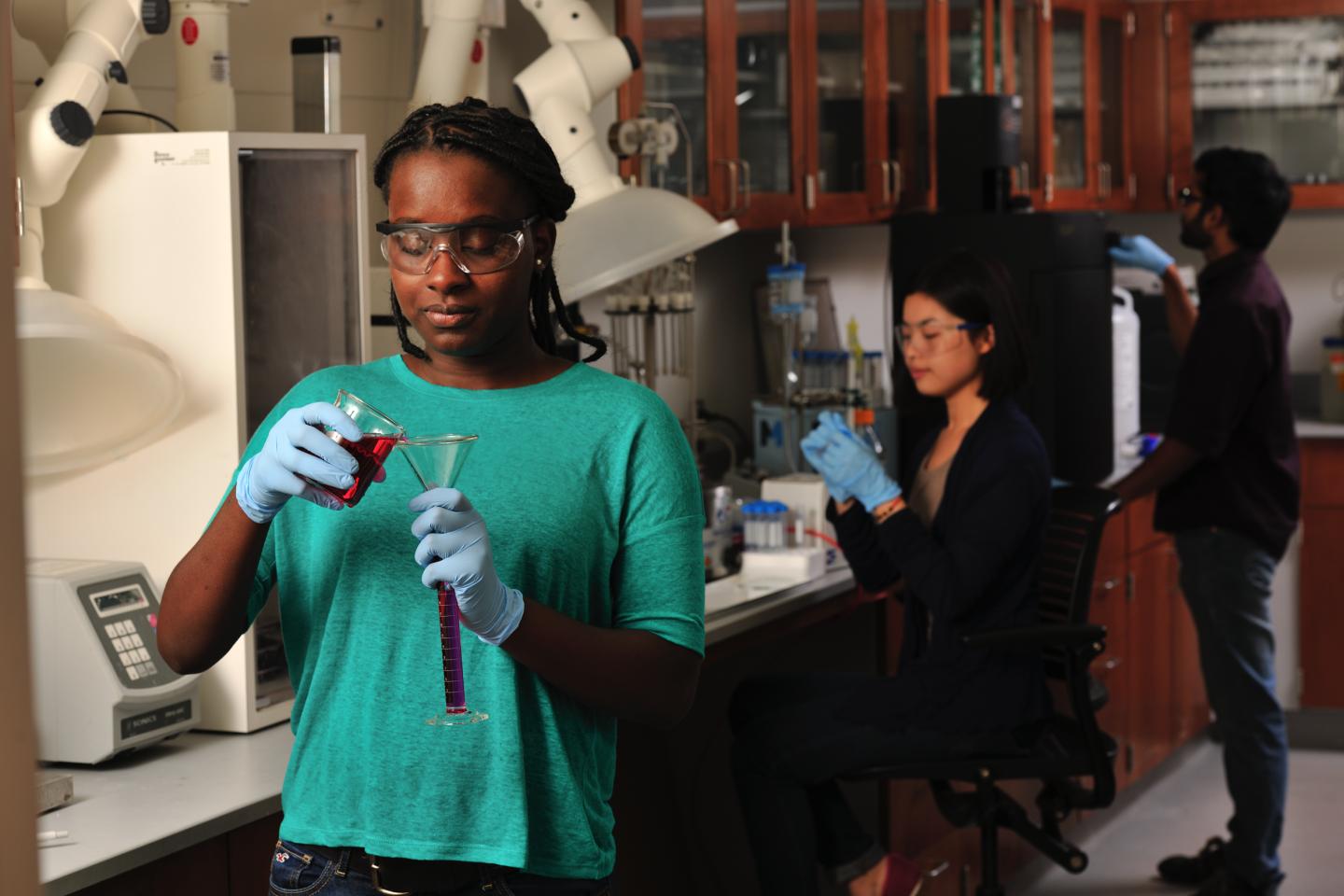
In a groundbreaking study that bridges the realms of biology and robotics, researchers at Penn State have revealed a revolutionary method of coordinating micro-sized robots through sound waves. This innovative research not only mimics nature but also sets the stage for significant advancements in artificial intelligence and autonomous systems, showcasing how the humble principles of acoustics can enable intricate collective behavior among diminutive robotic agents.
Historically, animals such as bats, whales, and insects have utilized acoustic signals for various forms of communication and navigation. Drawing inspiration from this natural phenomenon, the research team, led by Igor Aronson, sought to create microrobots that can communicate and coordinate with one another without the need for complicated programming. The study has profound implications, hinting at the potential applications of these robotic swarms in disaster response, pollution cleanup, and even inside human bodies for targeted medical treatments.
At the heart of this research is the idea of collective intelligence, a concept borrowed from social insects like bees or midges. Just as these creatures use sound to maintain cohesion as they move, the researchers found that their micromachines, which emit and detect sound waves, could similarly self-organize. This emergent behavior enables the robots to act as a collective unit, adapting to their environment and performing tasks in a coordinated manner. Aronson likens their operation to a flock of birds, synchronizing their movements through acoustic communication.
.adsslot_ziBgRvaVA3{width:728px !important;height:90px !important;}
@media(max-width:1199px){ .adsslot_ziBgRvaVA3{width:468px !important;height:60px !important;}
}
@media(max-width:767px){ .adsslot_ziBgRvaVA3{width:320px !important;height:50px !important;}
}
ADVERTISEMENT
One of the most striking results of this study is the ability of the micro-sized robots to navigate and reform themselves after deformation. These capabilities are particularly critical for tasks in hazardous or cluttered environments where traditional robotic systems might struggle. The robots’ resilience is enhanced by their ability to detect changes in their surroundings, a feature that could be utilized in a variety of scenarios, from environmental monitoring to health applications within the body.
To delve deeper into their findings, the researchers developed a sophisticated computer model that simulates the behavior of these tiny robots. Each robotic agent in the model is equipped with a motor, a microphone, a speaker, and an oscillator. The simplicity of these components belies the advanced capabilities they possess. By synchronizing their oscillators with the acoustic signals, the robots can effectively navigate, find each other, and coalesce into larger functional groups. The researchers were pleasantly surprised by the level of cohesion and intelligence that emerged from such simple models.
This discovery is a significant milestone within the emerging field of active matter—a discipline dedicated to investigating the collective behaviors exhibited by self-propelled agents, both biological and synthetic. The research stands out from previous studies by demonstrating how sound waves can be employed to control microrobots, a notable departure from earlier methods that primarily relied on chemical signaling. Given the rapid propagation and minimal energy loss associated with sound waves, this new method is not only more efficient but also easier to implement.
The implications of using acoustic communication extend beyond mere coordination. The ability of these micro-sized robots to self-heal and maintain their operational integrity, even after experiencing fragmentation, opens up diverse avenues for practical applications. Such functionality is particularly valuable in surveillance, environmental monitoring, and medical interventions, where traditional systems might fail due to damage or disarray.
As the team moves forward, they believe that the concepts developed in this research could represent the foundation for the next generation of microrobots. These devices will be equipped to perform complex tasks while responding to external environmental cues effectively. The fundamental insights gained from studying the acoustic mechanisms underlying these robotic systems could inspire further innovations in robotics engineering and artificial intelligence.
The team is keen to explore various configurations and develop physical prototypes of their models for experimental validation. They anticipate that the realities of their theoretical work will reflect similarly in practical applications, ultimately leading to the development of robots that can perform intricate tasks in real-world settings. The objective is clear: to harness primitive elements of design and communication to enable sophisticated and resilient robotic systems.
As a natural progression in this ongoing research, further studies are likely to focus on refining the communication protocols among the robots, increasing their operational capabilities, and applying these systems to real-life challenges. Whether it be in the cleanup of polluted environments or the navigation of complex structures following a disaster, the future of micro-sized robotics is rapidly being transformed by the fusion of biology-inspired acoustics and cutting-edge engineering.
In summary, this research not only highlights a novel approach to robotic coordination but also illuminates the broader implications of acoustic signaling within active matter systems. As we continue to integrate principles from nature into technological applications, the potential for innovation seems limitless, promising a future where intelligent, self-organizing robotic swarms could profoundly impact various industries and sectors.
Subject of Research: Acoustic signaling for control and perception among micro-sized robots.
Article Title: Acoustic Signaling Enables Collective Perception and Control in Active Matter Systems.
News Publication Date: 12-Aug-2025.
Web References: Physical Review X
References: 10.1103/m1hl-d18s
Image Credits: Igor Aronson / Penn State
Keywords
Robotics, Micro-sized Robots, Acoustic Signaling, Collective Intelligence, Active Matter, Autonomous Systems.
Tags: acoustic signaling in natureadvancements in artificial intelligenceapplications of robotic swarmsautonomous robotic systemsbio-inspired roboticscollective intelligence in roboticsdisaster response roboticsmicroscopic robotspollution cleanup technologyself-organizing microrobotssound wave communicationtargeted medical treatment robots






